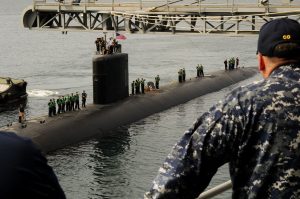The International Institute for Strategic Studies’ Military Balance 2022 report stated that “heightened perceptions of great-power competition” have motivated several countries’ defense planning considerations and “influenced important procurement decisions.” In Southeast Asia, several countries are proceeding with the acquisition of diesel-electric submarines, hoping to use the platform’s stealth and lethality to defend their maritime space against outside incursions. Indeed, it has even been suggested that submarines are the “weapon of choice” of the weak against the strong.
In the Philippine context, debates revolve around a Shakespearean-like inquiry: whether to buy, or not to buy, a fleet of submarines. Some argue that the long-term gains of possessing such a fleet would exceed the considerable costs of acquiring it, and increase the nation’s ability to defend its archipelagic waters. A recent social media poll by the Philippine Navy (PN) suggests that the public is supportive of the acquisition of submarines. Others, however, beg to differ, claiming that Manila would be better off procuring an adequate number of capable surface platforms given the urgency of threats and financial constraints.
Whichever side of the fence one is on right now, two things cannot be denied. First, the Philippines is an aspirational maritime power; since the 1950s, Manila’s top choice for deterring threats and defending its territory has been submarines. Although the PN and other services of the Armed Forces of the Philippines (AFP) have been hampered by its limited budget, such a desire cannot be erased from its institutional history. So far, the current AFP Modernization Program seeks to provide two submarines for the PN in the second horizon and four more in the third.
This leads to the second idea: the root of this debate derives from the pressing constraint in the strategic environment. China’s rapid military modernization over the past decade has challenged regional militaries’ doctrinal assumptions about naval warfare. Beijing’s integration of its navy, coast guard, and fishing militia under Xi Jinping’s Central Military Commission risks upsetting the geopolitical landscape in the South China Sea (SCS). By having submarines, Southeast Asian navies, such as the PN, wish to alter China’s gray zone tactics in the SCS because of its sea control and denial potential.
Nonetheless, it is suggested that the trend reflects the great powers’ increased willingness to use conventional means to assert their interests once their militaries reach a certain point of maturation. Russia’s recent military, especially naval, operations in Ukraine may indicate conventional warfare’s enduring relevance in global politics. China is likely watching whatever may apply to its playbook in the maritime space. This is something that the Philippines must prepare for, given PN’s lack of naval combat experience against external threats.
These factors play into Manila’s geostrategic behavior of what my co-authors and I have termed “Philippinedization,“ which is defined as “the process whereby a weaker state, backed by a powerful country, goes through great lengths in temporarily refraining from opposing a neighboring great power by resorting to economic and diplomatic rapprochements at the strategic level but strengthening its national security infrastructure on the operational level with an eye for potential conflict in the foreseeable future.”
As the debate proceeds regarding the costs and benefits of the submarine acquisition, Manila must recognize that any potential submarine acquisition by the Philippines should be guided by the need to deter or win future wars, and that anything else would be a blunder. The Philippines, therefore, needs to develop a workable “theory of victory” in the SCS at both the strategic and operational levels.
Doing so requires addressing legitimate concerns regarding its mission: how to integrate submarine warfare into the AFP’s warfighting concept against the multidomain threats likely to accompany future wars. It needs to go beyond thinking about the navy as a mere patroller of the archipelagic waters, but ultimately, a worthy fighter on the high seas.
Indian maritime security scholar Abhijit Singh has cautioned that discourse over maritime security ought not to be simply a contest of narratives but a space for overcoming the logistical realities of naval warfare. The Philippines would do well to prepare for future wars by recognizing the various challenges to do with submarines, namely, berthing spaces, system and hardware maintenance, domain awareness, data-sharing, personnel training, interoperability, safety measures, and the like, while there is still time.

































